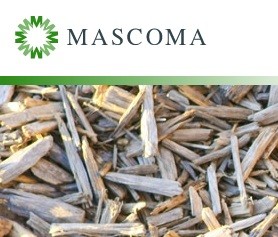
Following this morning's announcement that GM was taking an equity stake in cellulosic ethanol developer Mascoma, the two companies held a conference call. Like the earlier Coskata investment, GM researchers will be working with scientists at Mascoma to refine the process that they have developed for converting many kinds of biomass that might otherwise be considered waste.
Mascoma's Consolidated Bioprocessing (CBP) system is different than more traditional cellulosic production methods in that when fully developed, no additional enzymes will need to be added. Enzymes are currently the most costly part of the production process. Mascoma has developed microbes that can consume the pre-processed material and produce their own enzymes for breaking down the cellulose into sugars and then fermenting it.
The pre-processing consists of chopping the raw materials and mixing it with water in the presence of some heat. This results in a spongy peat moss-like material that is fed to the microbes. The output of the microbes is ethanol that only needs distillation. Mascoma is still refining the microbes which currently don't produce as much enzyme as needed to complete the process. For the pilot plant that is currently under construction, Mascoma will have to add some enzymes to the process although the amount is much smaller than normally required. By the time a commercial scale plant is ready in about 2010, Jamerson expects that no additional enzymes will be required. The CBP system also doesn't require any of the acids or other chemicals normally required for pre-treating biomass.
Mascoma CEO Bruce Jamerson explained that the process requires about 2-3 gallons of water per gallon of ethanol produced which is more than the Coskata's process but it requires less energy input. The cost of fuel from the process is similar to Coskata's at about $1-1.50 a gallon. Mascoma's agreement with GM is not exclusive and in the future they expect to license the process to other fuel producers. When questioned about why they were investing in multiple processes, GM's Candace Wheeler explained that they were potentially complementary. The lignin left over from the Mascoma process could be fed into the syngas process developed by Coskata, increasing the ultimate yield.
[Sources: General Motors, Mascoma]


Sign in to post
Please sign in to leave a comment.
Continue